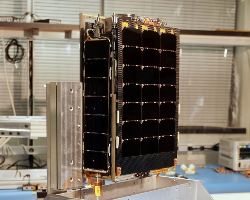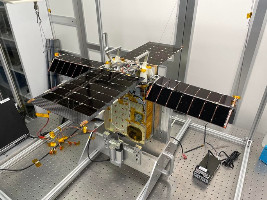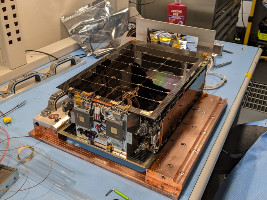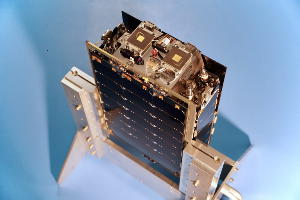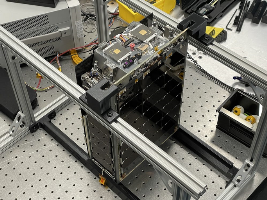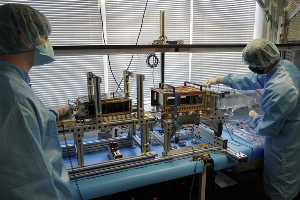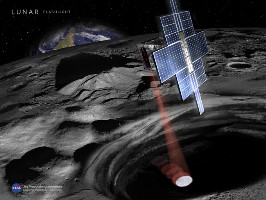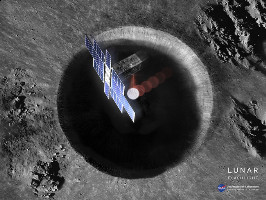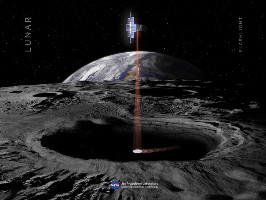| Spacecraft | Lunar Flashlight |
|---|---|
| Type | CubeSat |
| Units or mass | 6U |
| Status | Operational but was unable to enter Lunar orbit due to thruster problems and mission ended but may find future use (News as of 2023-05-15). |
| Launched | 2022-12-11 |
| NORAD ID | 54697 |
| Deployer | Mercury [Maverick] |
| Launcher | Falcon 9 (Intuitive Machines IM-1) |
| Organisation | NASA Jet Propulsion Laboratory |
| Institution | Space agency |
| Entity type | Government (Civil / Military) |
| Headquarters | US |
| Oneliner |
Illuminate permanently-shadowed regions and detect water ice absorption bands in the near-infrared. |
| Description |
Illuminate permanently-shadowed regions and detect water ice absorption bands in the near-infrared. Lasers in 4 different bands illuminate the lunar surface with a 3 degree beam (1Km). Light reflected off the lunar surface enters the spectrometer to distinguish water ices from regolith. Lunar Flashlight underwent a major architecture change in mid-2015:
|
| Results | |
| Failure cause | Suspected that debris of some kind was blocking propellant lines, reducing the amount of propellant reaching the thrusters. |
| Notes |
Was one of 13 SLS 6U Interplanetary or Lunar CubeSats, but did not make it in time. |
| Sources | [1] [2] [3] [4] [5] [6] [7] [8] [9] [10] [11] [12] [13] [14] [15] [16] [17] |
| Photo sources | [1] [2] [3] [4] [5] [6] [7] [8] [9] |
| COTS subsystems |
|
| Subsystems sources | [1] [2] |
| Keywords | Propulsion, Beyond Earth orbit |
| Space photos | 
|
Last modified: 2023-12-02
